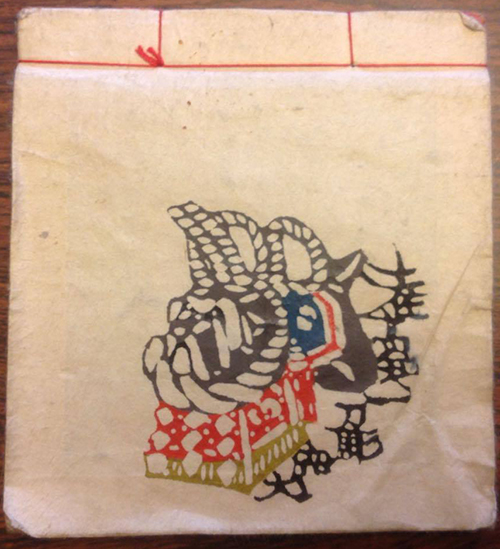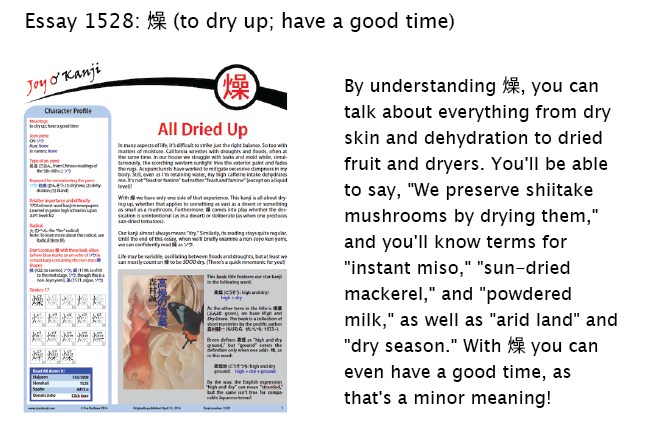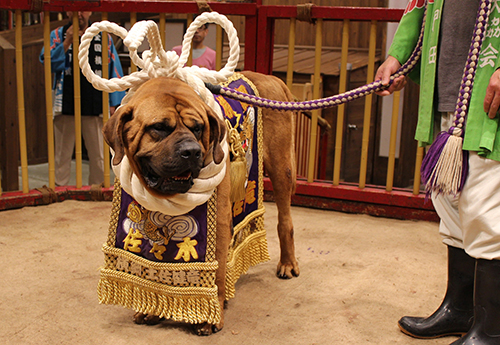Rorschach Test
As this is the 200th JOK Notebook post, I thought I'd do something a little different today—a Rorschach test! What do you see in this image:

Your choices:
a. a present
b. a dog
c. a mess of ropes and wire
d. kanji
I'll block the answer with a preview of the newest essay:

Two answers are right:
b. a dog
d. kanji
There are ropes but no wire, so answer c doesn't count.
And although answer a is wrong, the image was indeed a present, loosely speaking, in that a Japanese friend sent it to me this week.
The image confused me to no end. As he then explained, it's a photo of a notebook (手帖, てちょう) featuring a woodblock print (版画, はんが) of a fighting dog known as a 土佐犬 (とさけん). He clarified matters by providing the following photo:

It comes from a blog with many great pictures of this type of dog.
And he offered these explanations:
土佐犬とは、闘犬で有名な犬種です。
The tosa is a breed that's famous as a fighting dog.
闘犬* (とうけん: fighting dog); 有名 (ゆうめい: famous); 犬種 (けんしゅ: dog breed)
その中でも、一番、強い犬は、相撲の横綱の様に、綱のしめ飾りをつけます。
Among fighting dogs, it's the strongest, and people decorate it with ropes to make it look like a sumo grand champion.
中 (なか: among); 一番 (いちばん: most); 強い (つよい: strong); 犬 (いぬ: dog); 相撲 (すもう: sumo); 横綱 (よこづな: yokozuna, a grand champion in sumo); 様 (よう: like); 綱 (つね: rope); しめ飾り (しめかざり: decorating with ropes); つける (着ける: to wear)
Of all the things it never occurred to me to do to a dog ....
Here are four-month-old tosa puppies named Ayano, Akito, and Akira:
Now I can interpret the initial image much better, though one aspect still seems nearly impossible to make out. Those spiky black lines that resemble a cobblestone path under the dog? Those are kanji! Have another look:

Can you recognize any characters?! Here they are:
土佐高知一刀彫闘犬
One-Knife Carving of a Tosa Fighting Dog from Kochi
土佐 (とさ: dog breed); 高知 (こうち: name of a prefecture on Shikoku); 一刀彫 (いっとうぼり: one-knife carving)
An English Wikipedia page says that this rare type of dog was originally bred in Tosa, a province that has since become Kochi Prefecture. My friend said he bought this notebook many decades ago while traveling through Shikoku, so with the reference to Kochi, things are coming together. But what's a "one-knife carving"?
Digital Daijisen defines it as "a carving carved with one knife," and other dictionaries explain that it's a "rough carving that looks as if it's carved with one knife."
By the way, my friend mentioned one feature twice, so it's obviously quite important when it comes to this object he has loved:
和綴じ (わとじ: Japanese-style binding)
I didn't know what Japanese binding was (and I'm constantly amazed at how the Japanese have their own unexpected methods for absolutely everything!), but finding images quickly told me what I needed to know. What beautiful simplicity. It's functional and elegant all at once.
Oh, one more thing. In writing back, I called the notebook a 本 (ほん: book). Apparently, this is a big no-no, and he took pains to clarify again that it's a 手帖, not a 本. To English speakers, there's not a world of difference. After all "book" lies at the heart of "notebook," "booklet," "e-book," and probably more objects that lack perfect binding. But Japanese is different, of course. Yes, I just looked up "e-book" and found this:
電子書籍 (でんししょせき: e-book; electronic book; digital book)
There's no 本 in sight. One more distinction to keep in mind! Have a great weekend!

Comments